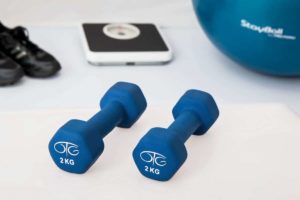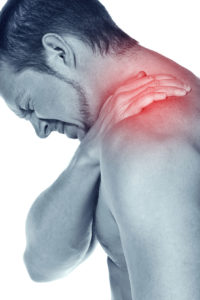Chronic Diseases
Music Keeps Cardiac Patients Moving
Walk into most fitness facilities and you’ll likely hear some sort of music playing. Could that music be what motivates people to move more? For a group of cardiac rehabilitation patients, that was indeed the case.
Alzheimer’s and Diet
It’s never too early to talk about Alzheimer’s disease—even for a
nonmorning person like me. On a misty March morning in New York’s
financial district, I rushed across traffic and made it to the 8:00 am
continental breakfast just in time for the “Role of Nutrition in
Dementia Prevention and Management” conference, which was buzzing with
the world’s foremost nutrition epidemiologists and Alzheimer’s experts.
Chronic Pain in Fitness Professionals
An Objective Eye
It can be difficult to take a step back and be objective when it comes to your own health. Katy Bowman, MS, director of the Restorative Exercise Institute in Ventura, California, and author
of Move Your DNA: Restore Your Health Through Natural Movement (Propriometrics Press 2014), suggests you write down
the following:
Profiles of Pain and Perseverance
In February 2006, Danny Strong was on top of the world. After years of working as a gym manager, he had opened his own personal training gym, making his dream a reality. The husband and father was also eager to welcome a second child into the family. A month after receiving the keys to his new facility, he took his family on a trip to visit his godmother. While on the road, Strong lost control of his vehicle and was hit by a tractor-trailer traveling at full speed. His pregnant wife, Sandra Urbano Strong, was killed instantly.
Physical Activity in Middle Age Reduces Sudden Cardiac Arrest Risk
Need more help motivating your clients to stay active?
Scientists recently analyzed 1,247 sudden cardiac
arrest (SCA) cases to learn more about links between SCA events and sports participation. Study subjects were aged 35–65. Providing a boon to the active set, the researchers reported that only 5% of sudden cardiac arrests occurred during sports activities. Prevalence was higher in men and among those around 51 years of age. SCA survival rates were higher among active individuals than among those whose cardiac arrests were not sport related.
Major Risk Factors for Coronary Artery Disease
These are some of the factors that can increase the risk of developing atherosclerosis and coronary artery disease:
Four Heart Disease Facts
Developing a thorough understanding of coronary artery disease (CAD) can help fitness professionals fight one of the world’s deadliest diseases. ?
How deadly? For starters, CAD is the leading cause of death around the world, accounting for 13.2% of all deaths in 2012 (WHO 2014a). It kills almost 380,000 Americans every year (CDC 2014a). Exercise professionals can do something about these statistics by designing fitness programs that reduce CAD risk factors in clients while improving their quality of life. ?
How to Be an Empathetic Personal Trainer
New beginnings. When Patty Shoaf first met Barbara 19 years ago,
she realized quickly that this would be a client like no other. “I
arrived for a consult at her house and a classy, high-heeled,
67-year-old woman wearing a skirt walked in,” Shoaf recalls.
Tips for Working With Older Caregivers
Adults over 50 who are caring for aging parents are not like other fitness clients of similar age.
For starters, caregivers tend to be less healthy. A study by the insurance company MetLife noted that “adult children 50+ who work and provide care to a parent are more likely to have fair or poor health than those who do not provide care to their parents” (MetLife 2011). Another study showed that 17% of caregivers felt their health had gotten worse as a result of their caregiving responsibilities (Feinberg et al. 2011).
Research Looks at the Brain; Diabetes
Two distinct mental strategies used to manage pain—focusing attention externally and re-appraising the pain—involve different brain pathways, according to new research using functional magnetic resonance imaging (fMRI). The study appeared in the journal Anesthesiology (2011, 115 [4], 844–51).
Self Myofascial Release for Seniors
Did you know it’s important to take care of the fascia—or connective tissue—in your body? The health of connective tissue is a serious concern for older people, as movement restrictions can make it hard for them to perform simple activities of daily living. The condition of our connective tissue depends on two factors—how old we are and what we have done in our lives to keep our tissue healthy, hydrated and flexible.
The Best Time of Day to Exercise for Individuals With Type 2 Diabetes
Do you have clients with type 2 diabetes? Perhaps you should think carefully about when to schedule their strength training sessions, say researchers.
The purpose of their study was to determine whether pre- or post-dinner resistance exercise (RE) would more effectively reduce the risk of cardiovascular disease in individuals with type
2 diabetes. The researchers noted that this group tends to have “abnormally” elevated postprandial glucose and triacylglycerol (TAG) concentrations, which are known risk factors for CVD.
Activity Requirements for Adults With Limited Mobility
While much of the population is physically able to meet the accepted exercise recommendations for improving health, many people are not. Research from the University Institute on Aging, at the University of Florida, Gainesville, indicates that even modest amounts of activity can prove beneficial for those with physical limitations.
Postmenopausal Women: Jump for Bone Health
Knee osteoarthritis (OA)—a progressive disease that destroys articular tissues and cartilage—affects about 13% of women aged 60 and older. According to a report published in the Caspian Journal of Internal Medicine (2011; 2 [2], 205–12), the percentage of the overall population affected by OA is expected to increase owing to the growth of the older-adult segment and to high overweight and obesity rates. However, this study shows there may a solution for women with mild knee OA: progressive-impact exercise.
Powerful Postures to Melt Stress
In today’s complicated world, just listening to the evening news on television or radio can raise cortisol rates in the body. High stress levels, combined with current technological advancements, almost unending sensorial bombardment, and the ever-changing dietary habits of many developed countries, can deny the body time for repose and resynthesis.
Understanding Inflammation
Inflammation is the body’s immune, self-protective and healing response to harmful stimuli, irritants, pathogens and damaged cells. Most inflammation is acute, such as when you sprain your ankle. Symptoms of inflammation include swelling, redness, pain and (sometimes) impaired movement or function.
Playing Hurt
When Gray Cook was a high-school athlete, his coaches would comment, “That Gray Cook sure can play hurt.” He had over 20 fractures before he was 18, what with his love of football and motorcycles. He played while hurt, he says, because he had the ability to block out pain. Flash forward to 2014, and Cook—now a practicing physical therapist, certified orthopedic specialist and founder of Functional Movement Systems in Chatham, Virginia—was no longer able to block out neck pain. It was affecting his life, his work, and his ability to share his message of fitness and health.
Coronary Artery Disease: What Every Fitness Professional Needs to Know
Developing a thorough understanding of coronary artery disease (CAD) can help fitness professionals fight one of the world’s deadliest diseases. ?
How deadly? For starters, CAD is the leading cause of death around the world, accounting for 13.2% of all deaths in 2012 (WHO 2014a). It kills almost 380,000 Americans every year (CDC 2014a). Exercise professionals can do something about these statistics by designing fitness programs that reduce CAD risk factors in clients while improving their quality of life. ?
Is Magnesium a Diabetes Healer?
A Tufts University study led by Adela Hruby, PhD, MPH, has found that healthy people with the highest magnesium intake were 37% less likely to develop high blood sugar or excess circulating insulin, common precursors to diabetes.
Among people who already had those conditions, those who consumed the most magnesium were 32% less likely to develop diabetes than those consuming the least.
The second association held true even when researchers accounted
for other healthful factors—such as fiber—that often go along with magnesium-rich foods.
Nutrition Strategies for Stress and Pain Management
Stress and pain diminish quality of life for millionsofAmericansandcostbillionsin healthcare expenses and lost wages.



















